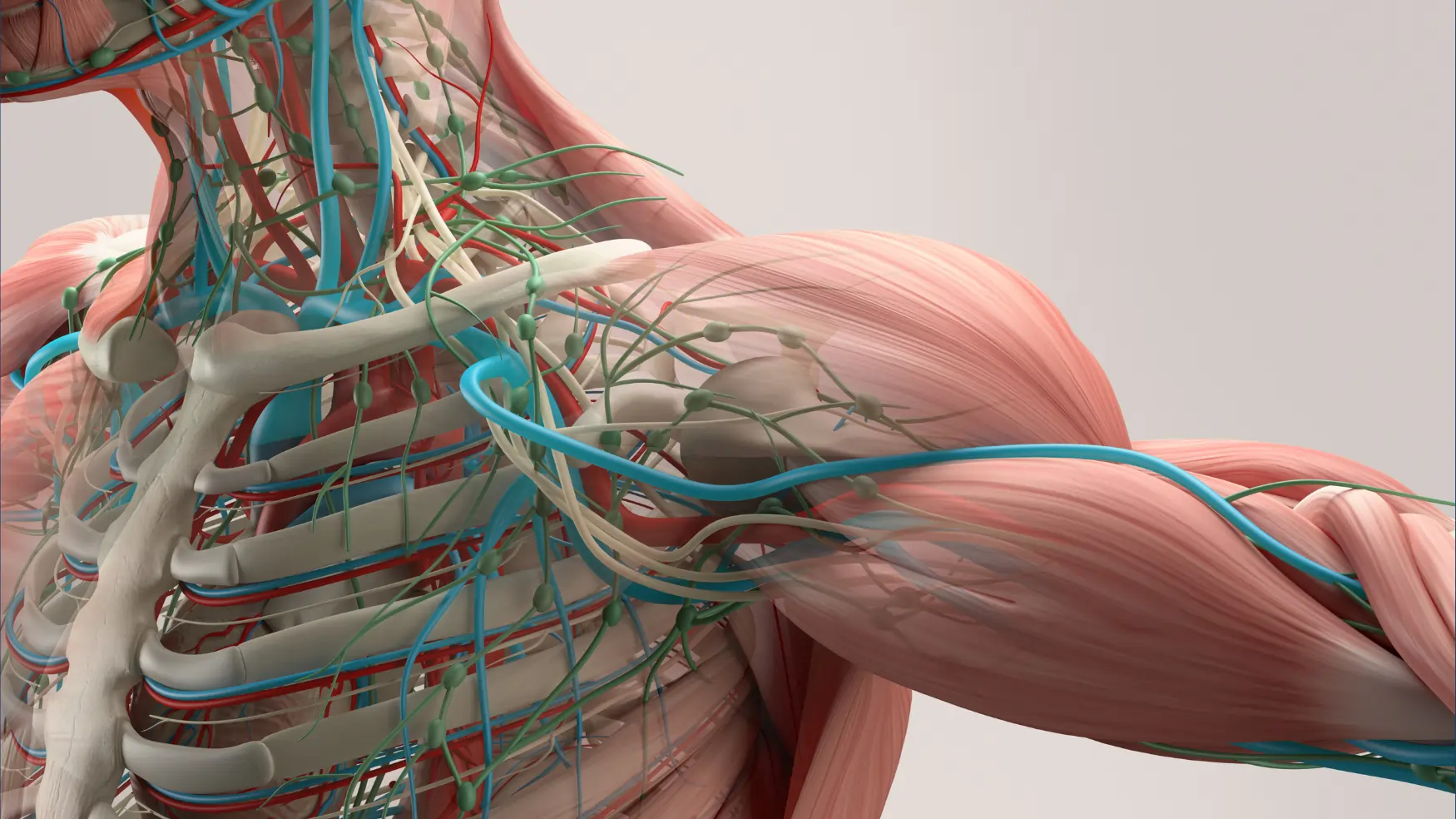Every now and then, a question pops up: “Can a physiotherapist be called a doctor?” It’s more than semantics, it touches on professional identity, public trust, legal regulation, patient safety, and respect.
Introduction
Can a Physiotherapist Be Called a Doctor- Let’s Find Out!
On this page
- What “Doctor” Means Legally, Socially, Professionally
- Who Are Physiotherapists & What Do They Do?
- The Indian Scenario: What Has Changed
- So, Can Physiotherapists Be Called “Doctor”? Yes, With Conditions
- Arguments For Physiotherapists Using “Dr.”
- Arguments Against
- Why Physiotherapists Are No Less Than Doctors In Many Ways
- What the Law & Regulation Currently Says
- Why Physiotherapists Are No Less, Even if Not Exactly the Same


E
very now and then, a question pops up: “Can a physiotherapist be called a doctor?” It’s more than semantics, it touches on professional identity, public trust, legal regulation, patient safety, and respect. In the Indian context, this debate has intensified recently, especially with new policies from the government and reforms in allied health profession regulations.
In this blog, we’ll explore:
- What a “doctor” typically means, legally & socially
- What physiotherapists actually do, and how their training compares
- What the recent regulatory changes in India are (especially the 2025 Physiotherapy Curriculum)
- The arguments for and against physiotherapists using the “Dr.” prefix
- Why physiotherapists are no less than doctors in many respects
- What the future looks like.
What “Doctor” Means Legally, Socially, Professionally
Before we judge whether physiotherapists can be doctors, we need clarity: what does “doctor” mean in India and in many healthcare systems? Some important aspects:
- Legal recognition: The Indian Medical Degrees Act, 1916, and acts of medical councils, designate who is considered a “registered medical practitioner.” This usually refers to allopathic doctors (MBBS etc.), and in many cases practitioners of Ayurveda, Homoeopathy, Unani, etc., under respective laws.
- Scope of practice: Doctors (in the allopathic system) have the legal authority to diagnose a wide range of illnesses, order tests, prescribe medicines, perform surgeries, etc.
- Public understanding: For many people, being called “doctor” carries the meaning of “medical doctor”, someone who can treat you for disease, prescribe medication, refer for specialised tests, etc.
So, using “doctor” comes with legal, regulatory, ethical, and practical implications. Misuse can lead to legal risk or public confusion.
Who Are Physiotherapists & What Do They Do?
Physiotherapists are healthcare practitioners specializing in restoring, maintaining, and maximizing the body’s physical function and mobility. Their work often includes:
- Rehabilitation after injury, surgery
- Treatment of musculoskeletal issues (back pain, joints)
- Neurological rehab (stroke, spinal cord injuries)
- Pulmonary (breathing / cardio-respiratory) physio
- Geriatrics, pediatrics, sports physio, etc.
Their training involves anatomy, physiology, biomechanics, clinical assessment, exercise therapy, electrotherapy, mobility, and many more facets. They often collaborate with doctors, nurses, occupational therapists, etc.
They may also act as first-contact practitioners in some healthcare systems, meaning patients can approach them directly without needing a referral from a medical doctor.
The Indian Scenario: What Has Changed
In India, physiotherapy has traditionally been seen as a paramedical/allied health profession. However, in recent years, big changes have been introduced, which are shifting the landscape. Key among them are:
1. The NCAHP Act 2021 & Regulation of Allied Health Professions
- The National Commission for Allied and Healthcare Professions (NCAHP) Act, 2021 is a law that regulates many allied health professions (including physiotherapy), aiming for uniformity in qualification, standard, curriculum, recognition.
- It sets out definitions and scope, including what physiotherapy entails. Among other things, the Act identifies physiotherapy as including “examination, diagnosis, treatment … advice and instructions … connected with movement dysfunction, bodily malfunction, physical disorder … etc.”
2. Physiotherapy Curriculum 2025 (Competency-Based Curriculum)
- In April 2025, the NCAHP released a new (Competency-Based) Curriculum for Physiotherapy.
- Major changes include:
- The Bachelor of Physiotherapy (BPT) will become a five-year program (four years academics + one year compulsory clinical internship).
- Admissions to BPT will require NEET (National Eligibility cum Entrance Test), which is also used for MBBS and many medical/health courses.
- The curriculum adopts competency-based assessments, earlier and consistent clinical exposure, ethical practice, etc.
- Crucially, the 2025 curriculum recommends that physiotherapists be given the right to use the prefix “Dr” (Doctor) and a suffix “PT” (Physiotherapist) after their name.
3. Controversy & Pushback
- After the curriculum was published, there was opposition. The Directorate General of Health Services (DGHS) issued a letter (September 2025) instructing physiotherapists not to use “Dr” prefix, on grounds that physiotherapists are not trained medical doctors, and that using the prefix may mislead public and violate the Indian Medical Degrees Act, 1916.
- Strong opposition from physiotherapy bodies, allied health groups, etc., led to that DGHS letter being withdrawn shortly after. The DGHS has clarified that further examination and deliberation are needed.
So, Can Physiotherapists Be Called “Doctor”? Yes, With Conditions
From the above, we can see that the answer is not a simple yes or no, but more nuanced. Based on the new curriculum and regulatory shifts, physiotherapists can use “Dr”, under certain conditions:
- Completion of the new curriculum: The revised 5-year BPT (with internship) under NCAHP is required. If someone is graduating under the old curriculum, the rules applying to them might be different.
- Registration: Being registered under NCAHP or the relevant allied health body is likely a requirement for legal recognition.
- Use of “PT” suffix: To avoid misleading the public, “Dr” should be immediately followed by a clarification, such as “(PT)” (Physiotherapist). This way people know the professional domain. This mitigates confusion with medical doctors (MBBS etc.).
- Transparency and ethical use: The title should not mislead patients about the kind of services they can expect (e.g. prescribing medicine, doing surgery). Physiotherapists aren’t allopathic medical doctors; they do not generally prescribe medicines or perform surgeries (unless additionally qualified), so the title must be used ethically.
Arguments For Physiotherapists Using “Dr.”
Here are reasons why many support giving physiotherapists the title “Dr.” with PT suffix etc. –
- Educational rigor is increasing: With the course extended, NEET requirement, more clinical exposure, competency-based training, etc., physiotherapists are being trained in a more rigorous way.
- First contact practitioners: Physiotherapists often see patients without referrals, especially for musculoskeletal, sports injuries, or rehabilitation. Recognizing them as doctors helps in ensuring their autonomy, quick access, and reduces burden on medical doctors.
- Global norms: In many countries, physiotherapists are called “Doctor of Physical Therapy” or other doctoral-level titles, reflecting advanced training. Indian reforms are aligning with global standards.
- Professional identity & respect: Using “Dr.” helps in public recognition of physiotherapists as professionals, not just paramedical or auxiliary staff. This can help in combating stigma or undervaluation.
- Better patient outcomes: Early, appropriate physiotherapy can prevent complications, reduce suffering, reduce burden on hospitals. If patients trust physiotherapists more (partly via title), they may seek help earlier.
Arguments Against
There are valid concerns and counterpoints as well:
- Legal ambiguity: Existing laws (like Indian Medical Degrees Act) and medical council rules have historically reserved “doctor” or “Dr.” prefix for medical doctors (MBBS etc.) and practitioners of recognized systems of medicine (AYUSH, etc.). Using the prefix might conflict with those.
- Risk of misleading the public: If someone sees “Dr.” they might think they can get diagnosis, medication, prescription, surgery, etc., which physiotherapists are not generally permitted to do, unless they have further qualifications.
- Quackery concerns: One common worry (raised by DGHS etc.) is that misuse of titles leads to people pretending to be more qualified than they are, offering unscientific or unsafe treatments.
- Transition period issues: The new curriculum becomes effective from 2026-27. Those who graduated earlier under old systems may not immediately have the same rights. There is a risk of confusion over “who is Dr (PT)” legally and who is not.
Why Physiotherapists Are No Less Than Doctors In Many Ways
Even with the caveats, physiotherapists have, in many ways, skills and roles that put them on levels similar in significance to doctors, though different in scope.
- They have deep knowledge of anatomy, physiology, biomechanics, neurology, etc. Rehabilitation often requires diagnostic thinking, assessing patient history, interpreting imaging reports, deciding treatment plans, monitoring progress, modifying plans. These are sophisticated clinical skills.
- Their interventions are evidence-based, scientifically studied. Their outcomes affect quality of life: pain relief, restoration of mobility, independence, avoidance of surgery or complications.
- In many settings, especially in rural or under-served areas, physiotherapists are often the first healthcare professionals people see for certain kinds of problems (pain, mobility issue, post-injury rehabilitation).
- As healthcare evolves, non-pharmacological, non-surgical interventions are gaining importance. Chronic disease management (like for arthritis, COPD, cardiac rehab, neuro-rehab) increasingly relies on physiotherapy.
- Their training demands have increased (as above). The BPT 5-year curriculum with internship, requirement of NEET, more clinical exposure, these raise their academic and practical credentials.
What the Law & Regulation Currently Says
To be precise, here’s the current legal/regulatory status:
- The NCAHP 2025 Physiotherapy Curriculum says that physiotherapists can use “Dr” prefix and “PT” suffix. This is part of its recognition of the profession.
- But, the DGHS (Directorate General of Health Services) has issued a letter saying physiotherapists cannot use “Dr.”, citing legal acts (Indian Medical Degrees Act, etc.), risk of misleading public, etc.
- However, that DGHS letter has been withdrawn a day or so after it came out, due to objections and the need for more deliberation.
- Thus, the matter is currently in limbo: the curriculum recommends the use; DGHS has raised objections; public/physio bodies are supportive; legal precedent is mixed; implementation will require clarity.
Practical Implications
What does this mean for:
- Students graduating under the new curriculum (from 2026-27 onward): They would likely be able to use the “Dr.” prefix (with “PT”) once officially registered. It’s important they understand what that means (what they can or cannot do).
- Existing physiotherapists: Those who completed older curricula may or may not have the same rights. Until laws/regulations clarify, some caution may be needed to avoid misuse.
- Patients / public: They must understand that “Dr.” in “Dr. X (PT)” refers to a physiotherapist; that doesn’t necessarily mean medication prescription or surgery authority.
- Medical / healthcare system: More integration, more autonomy for physios, better roles in multidisciplinary care, possibly reduced burden on medical doctors for certain rehabilitative tasks.
Why Using “Dr.” with “(PT)” is a Fair Compromise
A useful middle ground is what the new rules suggest: using “Dr.” prefix but always with a “PT” suffix, clarifying specialization.
This gives professional recognition, dignity, signals academic effort & competence, but helps avoid confusion with allopathic doctors. It’s transparent.
Why Physiotherapists Are No Less, Even if Not Exactly the Same
Here are some points to help understand why physiotherapists deserve respect comparable to doctors, even though their roles differ:
- Different but complementary scope: The work of allopathic doctors often focuses on diagnosing disease, prescribing drugs, surgery etc. Physiotherapists focus on restoring function, mobility, preventing disability, promoting rehabilitation, which in many cases can be just as important for quality of life.
- Preventive role & rehabilitation: Many medical conditions can worsen if rehabilitation is delayed. Efficient physiotherapy can prevent complications (e.g. bed sores, stiff joints, muscle wasting, etc.), reduce chronic pain, reduce future medical costs.
- Holistic and patient-centred care: Physiotherapy often involves listening, understanding the patient’s lifestyle, goals, modifying exercise programmes, ensuring long-term adherence, etc. These are less “one-time fixes” and more ongoing partnership with the patient.
- Scientific foundation: The field is evidence-based, with research, clinical trials, outcome measures, etc. It’s not just “massage + exercises” but includes biomechanics, neuroplasticity, cardiorespiratory physiology, etc.
- Ethics, responsibility: With greater autonomy comes greater responsibility: assessing, making decisions, avoiding harm, referring to other specialists when needed.
What Needs to Be Done
To ensure clarity, fairness, and avoid misuse/controversy, some steps are important:
- Clear legal regulation: Laws and acts (IMD Act, NCAHP Act, state regulations) should explicitly clarify who can use “Dr” and under what conditions.
- Public awareness: Educate patients and public that “Dr. X (PT)” is a physiotherapist, different from a medical doctor in what they can and cannot do. To prevent misunderstanding.
- Ethical guidelines: Physiotherapy associations should issue clear codes of conduct on use of “Dr.” prefix, what clinical tasks are permissible, referral obligations, etc.
- Consistency across states: Health is partially regulated by states; allied health rules might differ state-wise. Uniformity would avoid confusion.
- Monitoring & enforcement: Ensuring people don’t misuse “Dr.” or misrepresent qualifications; ensuring physiotherapists don’t practice beyond their training (e.g., prescribing medicines when not qualified).
Conclusion
So, can a physiotherapist be called a doctor? The short answer is: yes, under the new rules and with specific clarifications, but not in the sense of being equivalent to an allopathic medical doctor with full rights to diagnose all conditions, prescribe drugs, surgery, etc. They are different professions with overlapping but distinct scopes.
The recent reforms in the 2025 physiotherapy curriculum in India represent a big leap. They provide physiotherapists with more education, more clinical exposure, and, if all goes well, more recognition. Granting them the “Dr.” prefix (with “PT” suffix) is a symbol of that recognition.
But with recognition comes responsibility: for physiotherapists to stay strictly within their scope, for regulators to clarify legal boundaries, and for the public to understand the difference. When all stakeholders act carefully, giving physiotherapists the respect they deserve (including title) can contribute to better healthcare, less confusion, and more trust.








